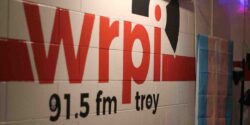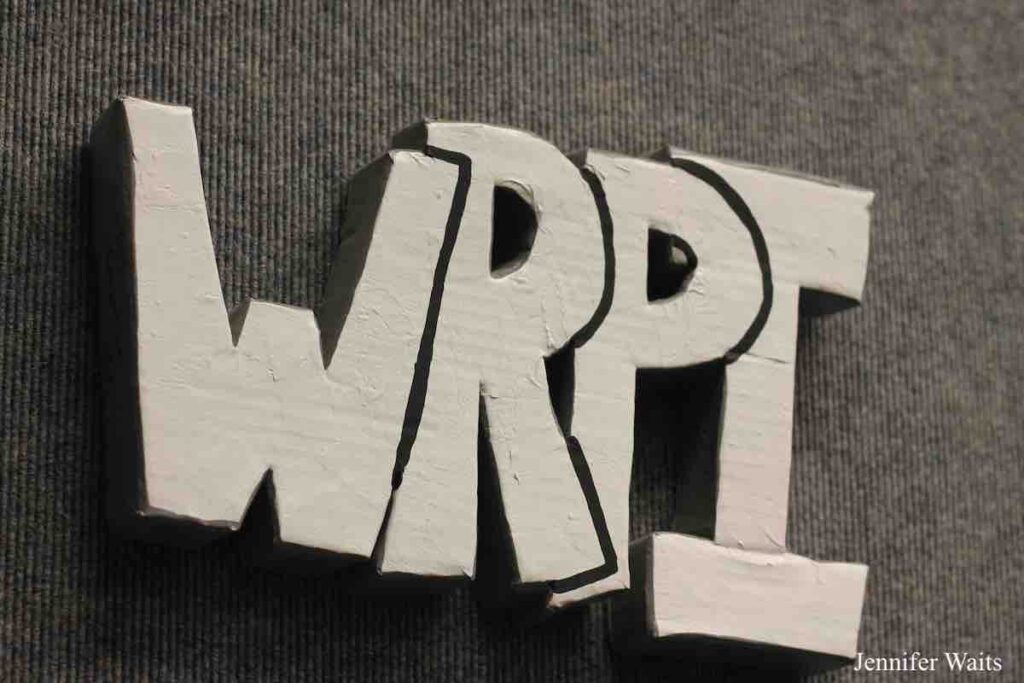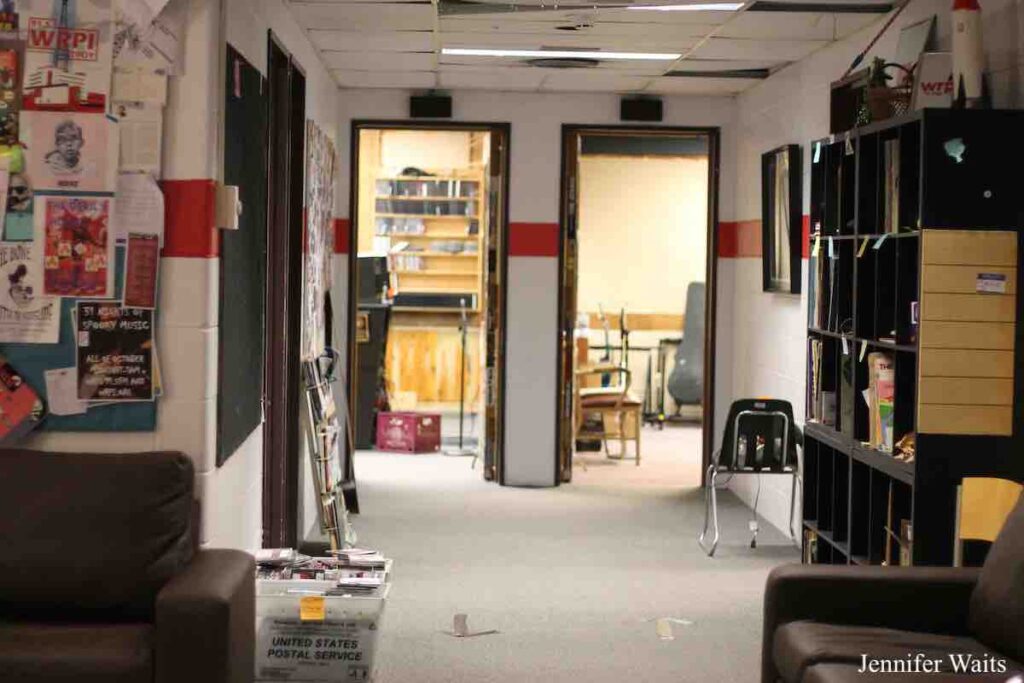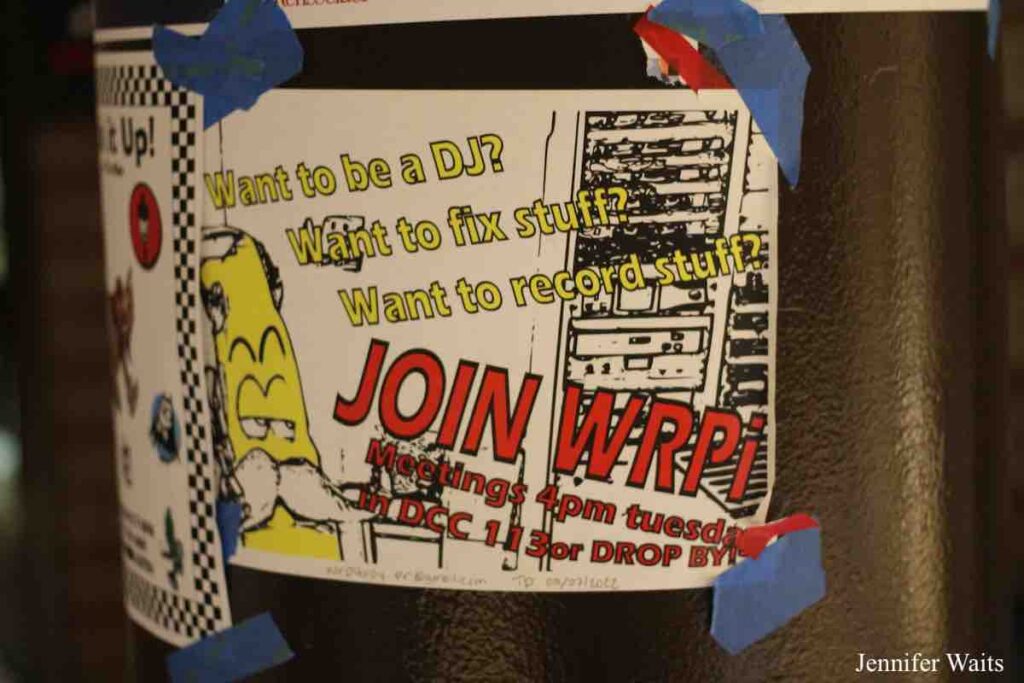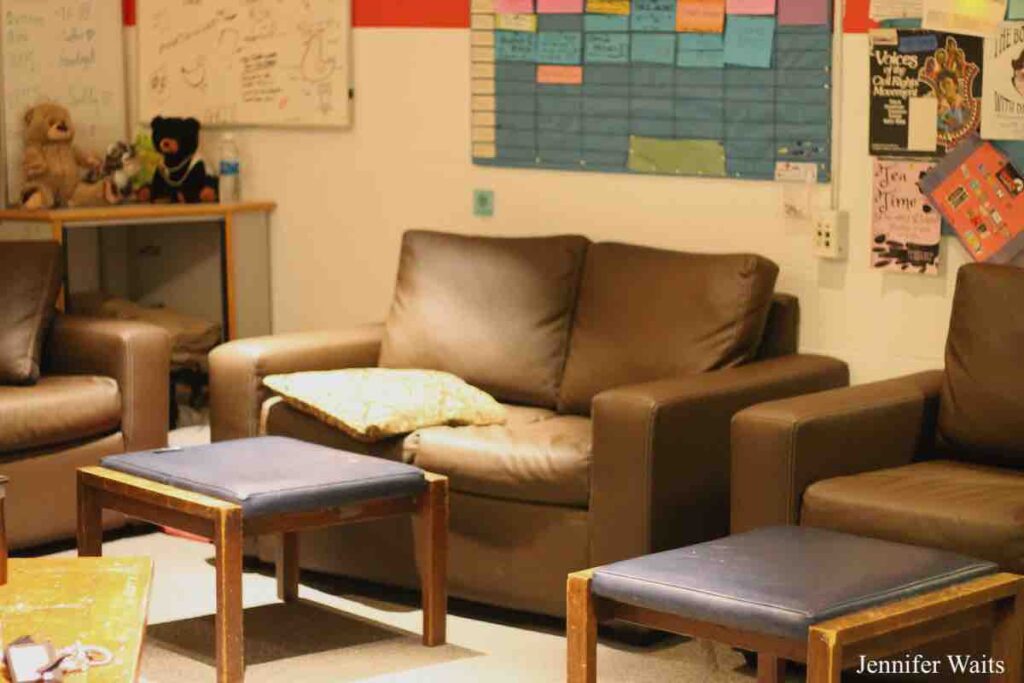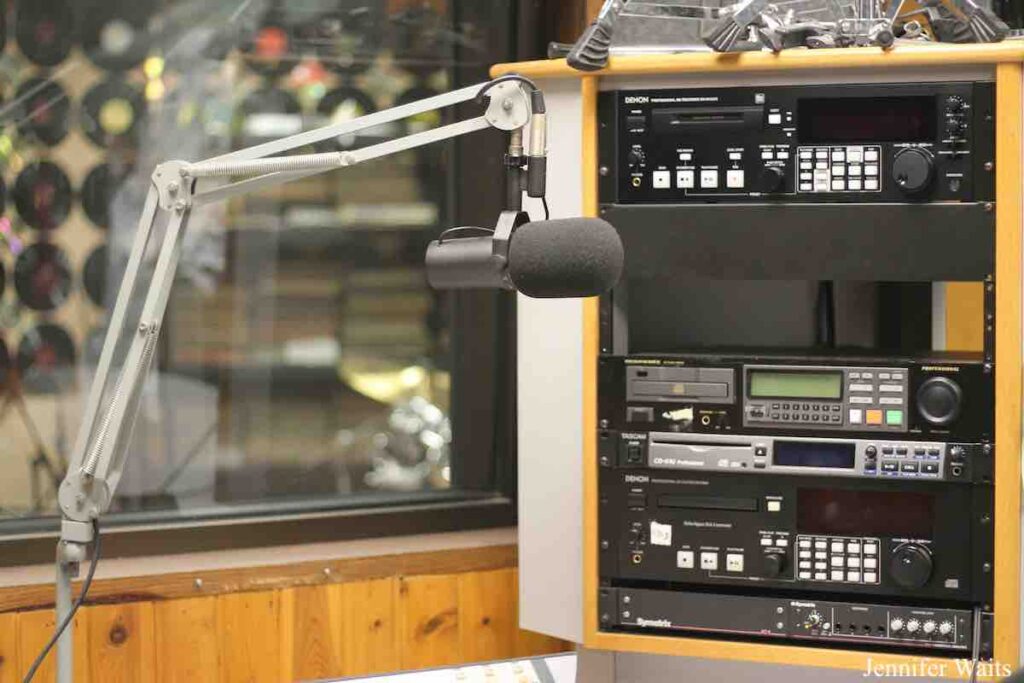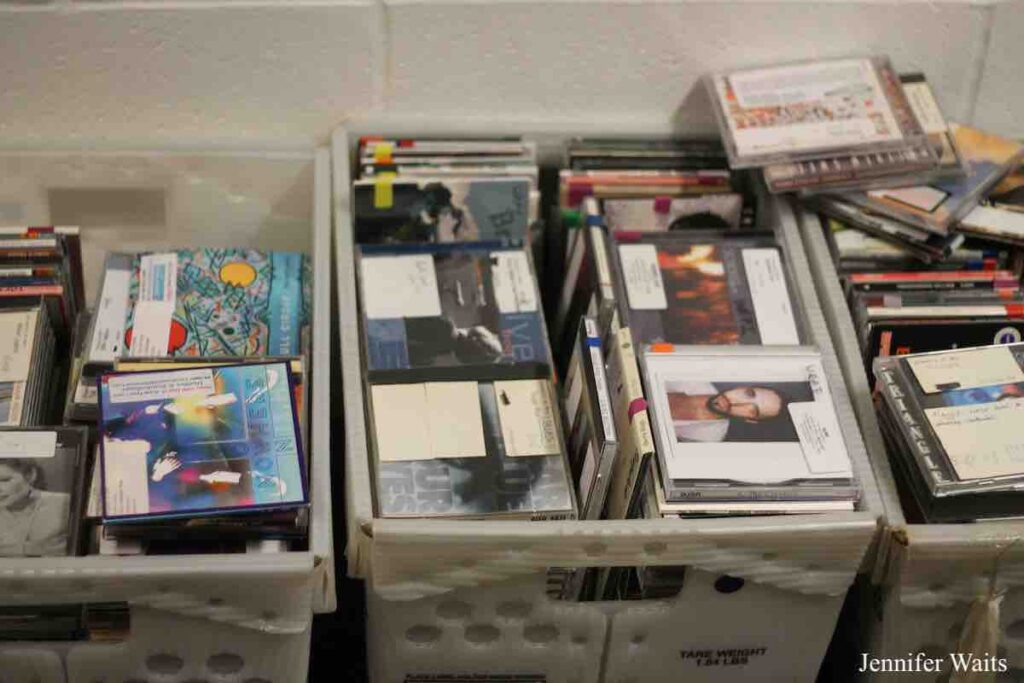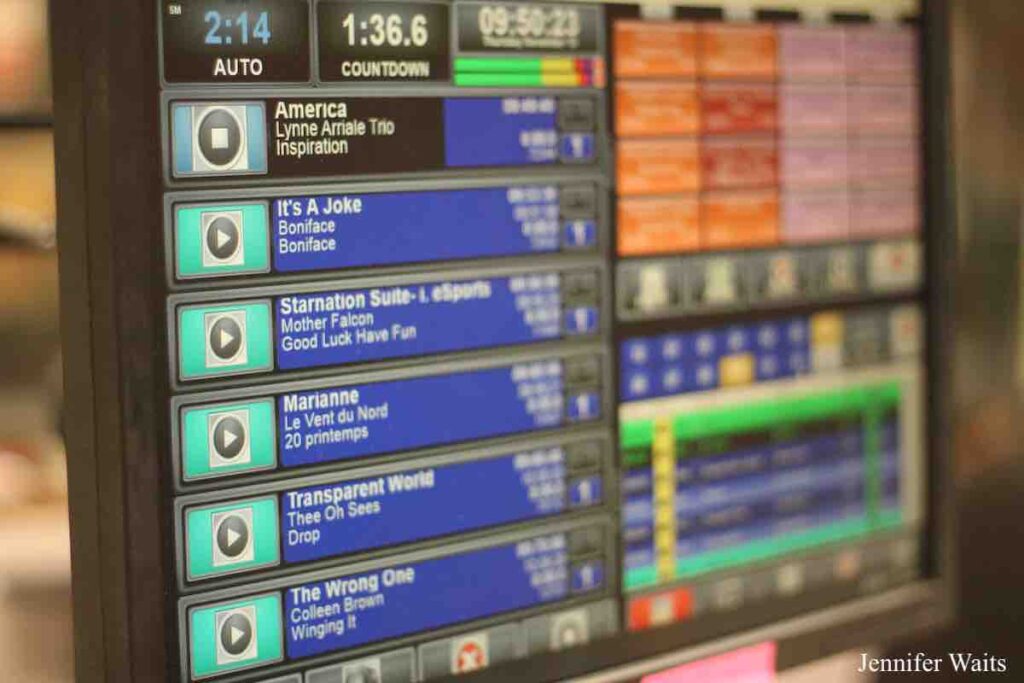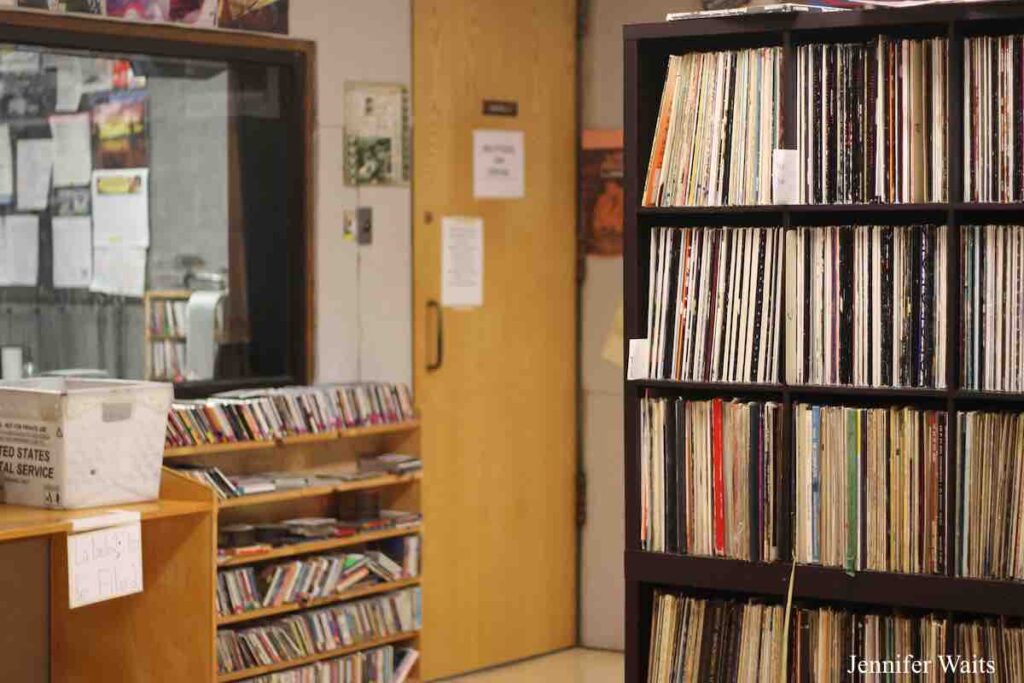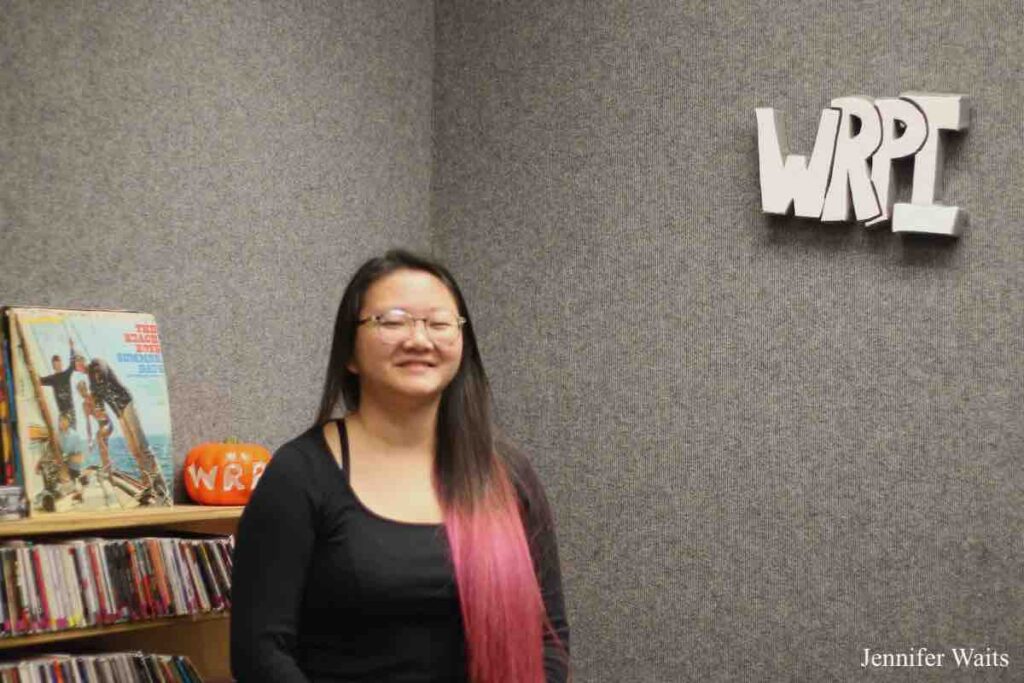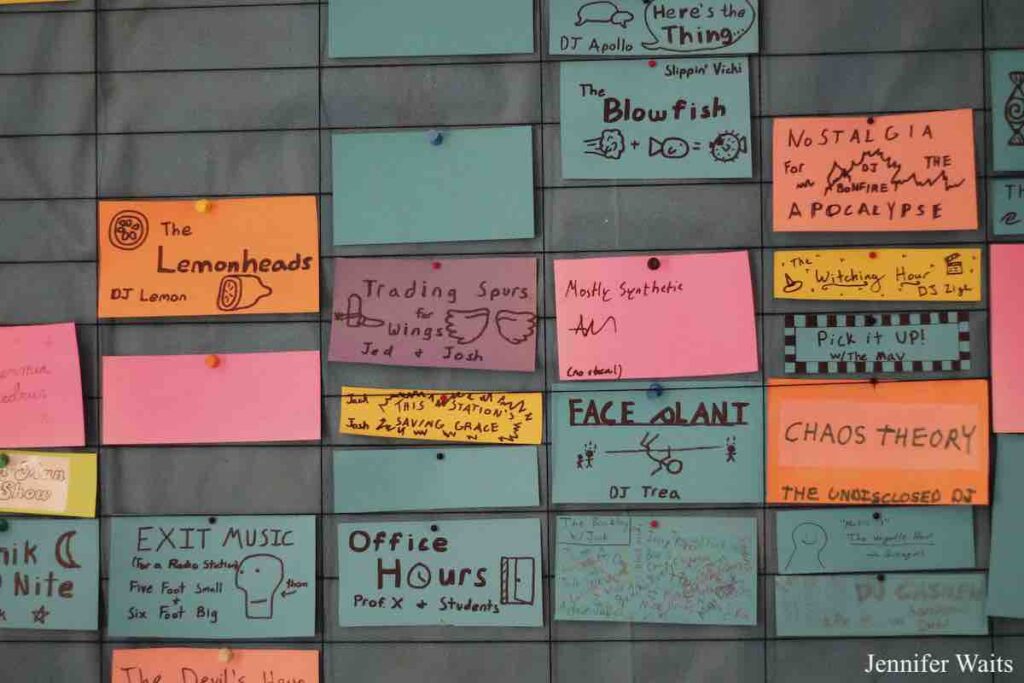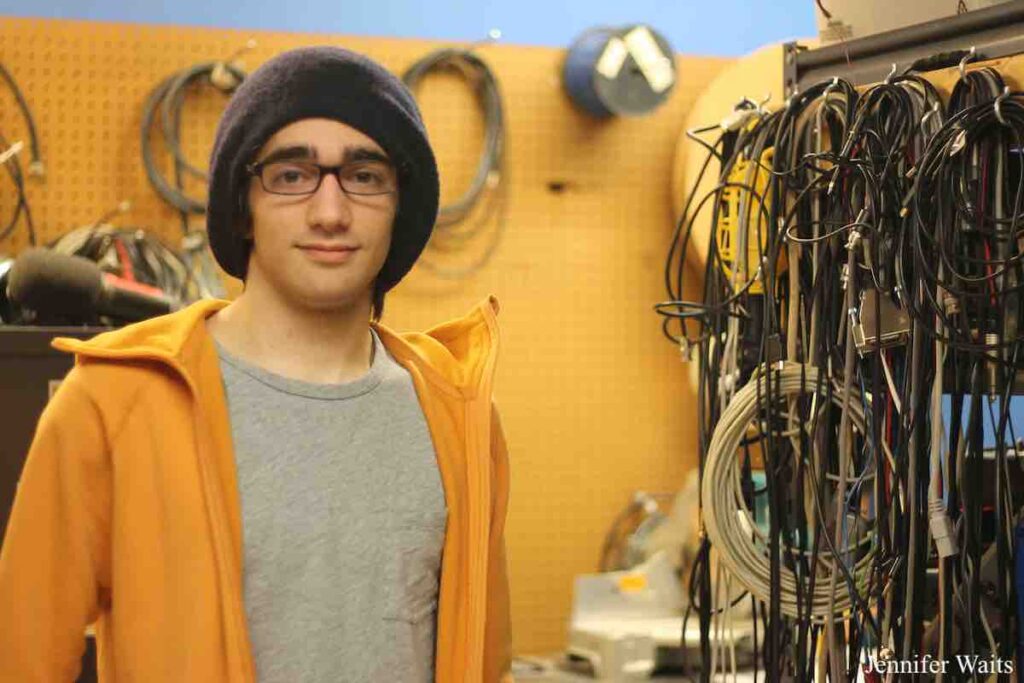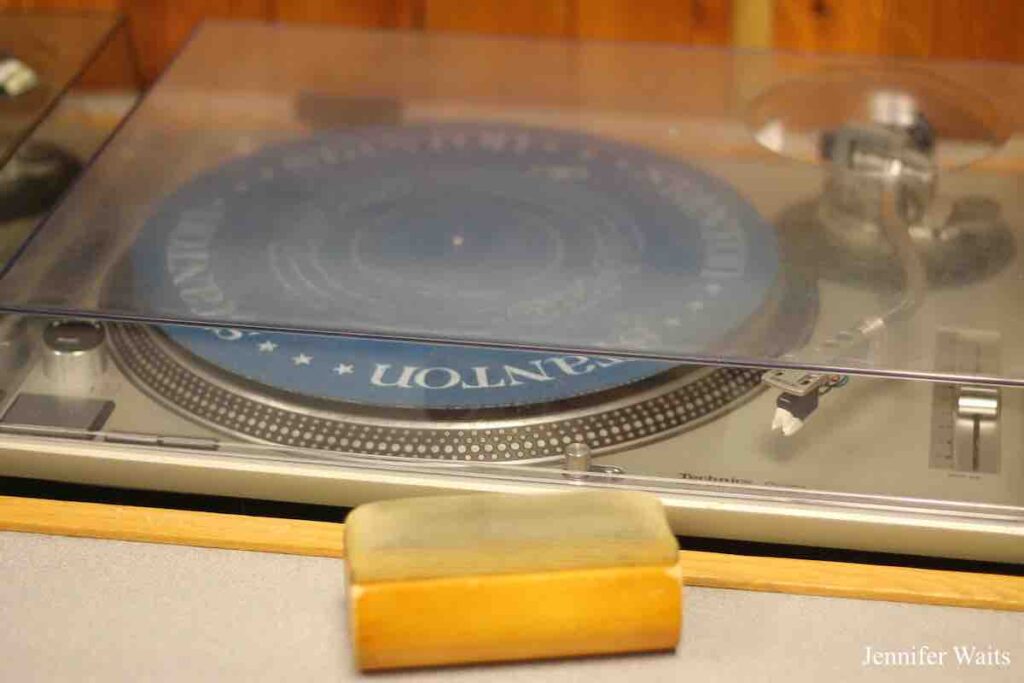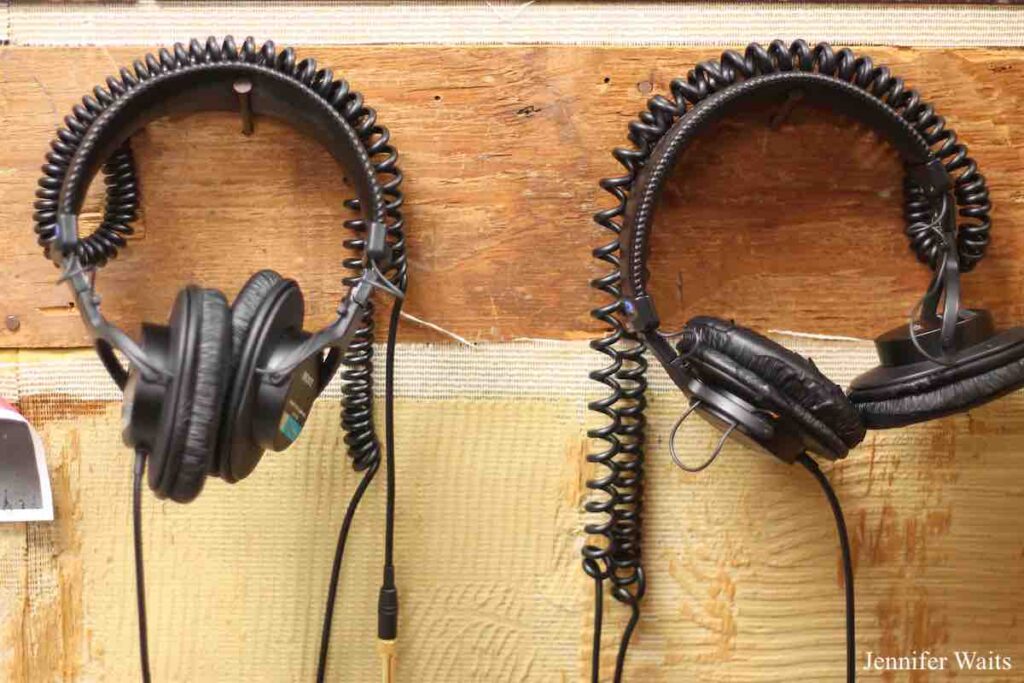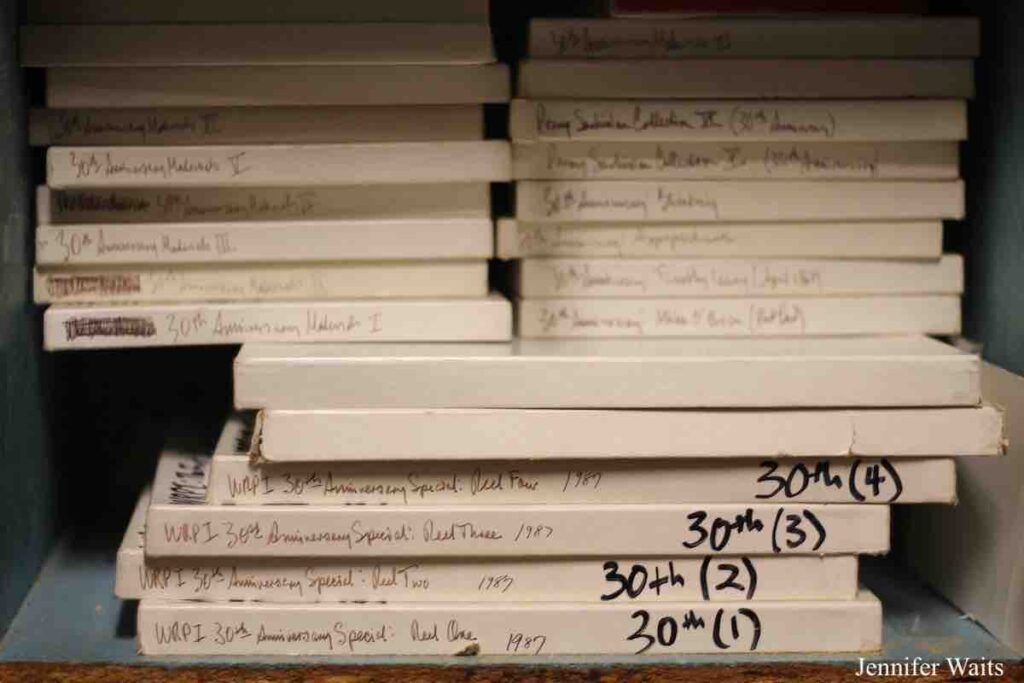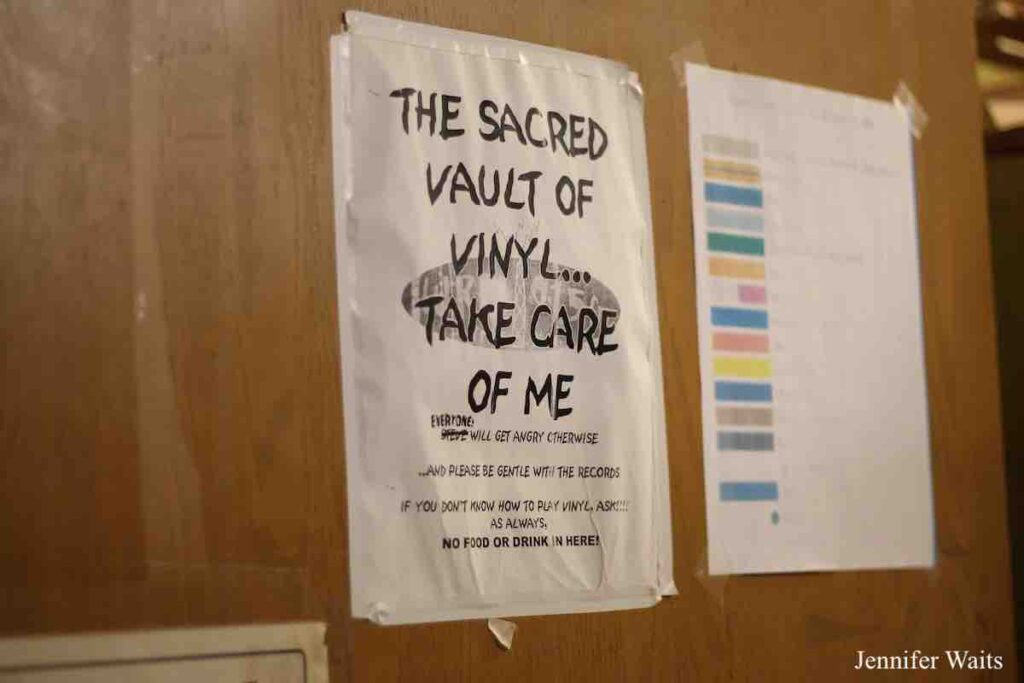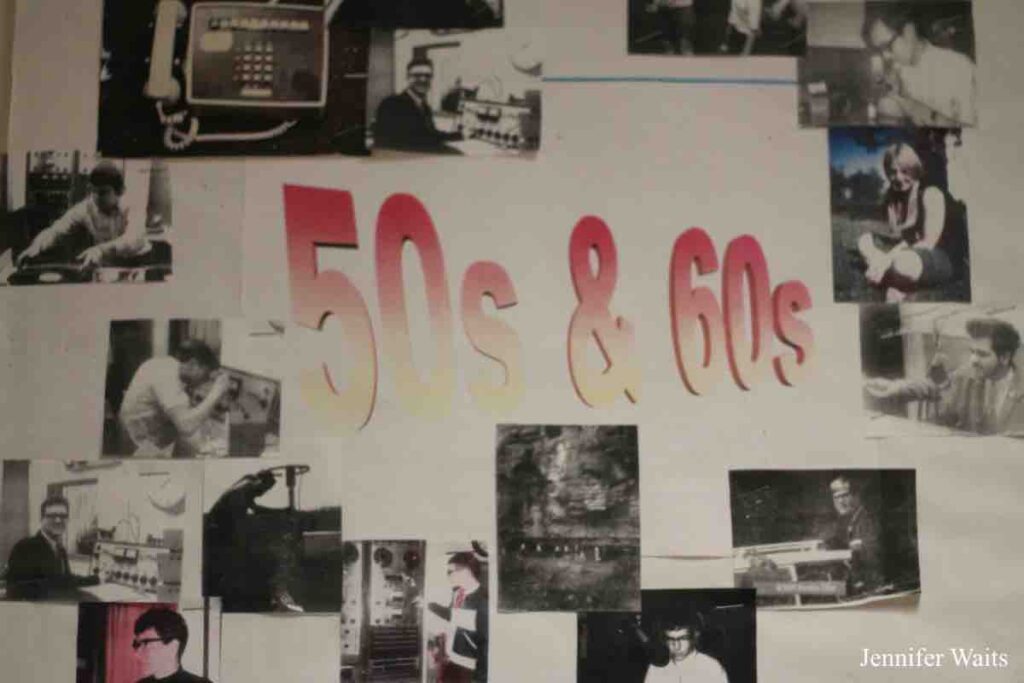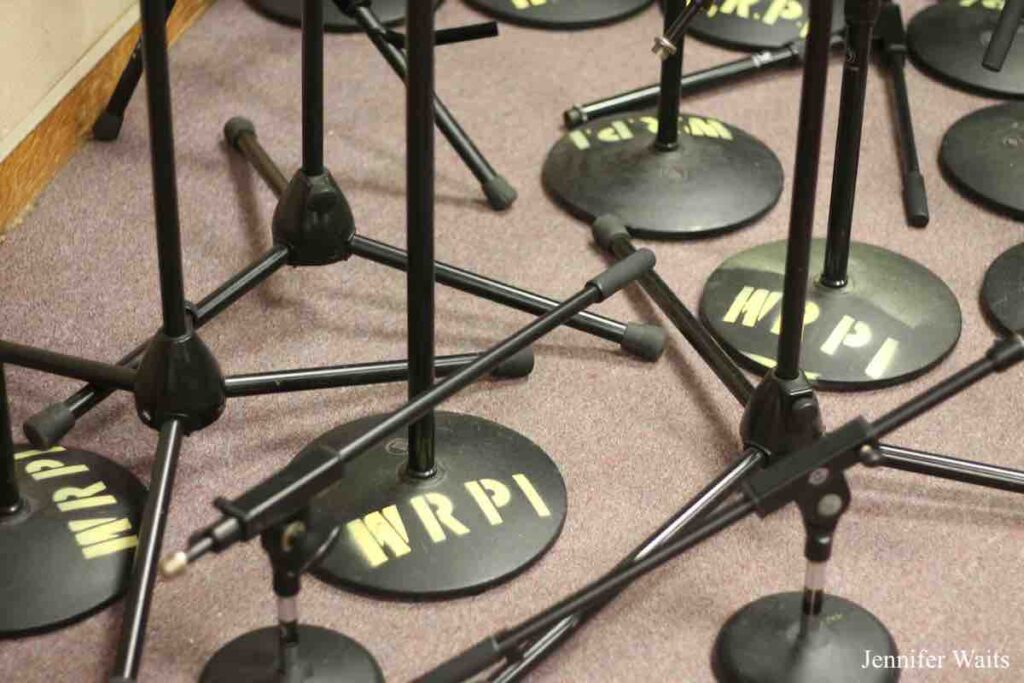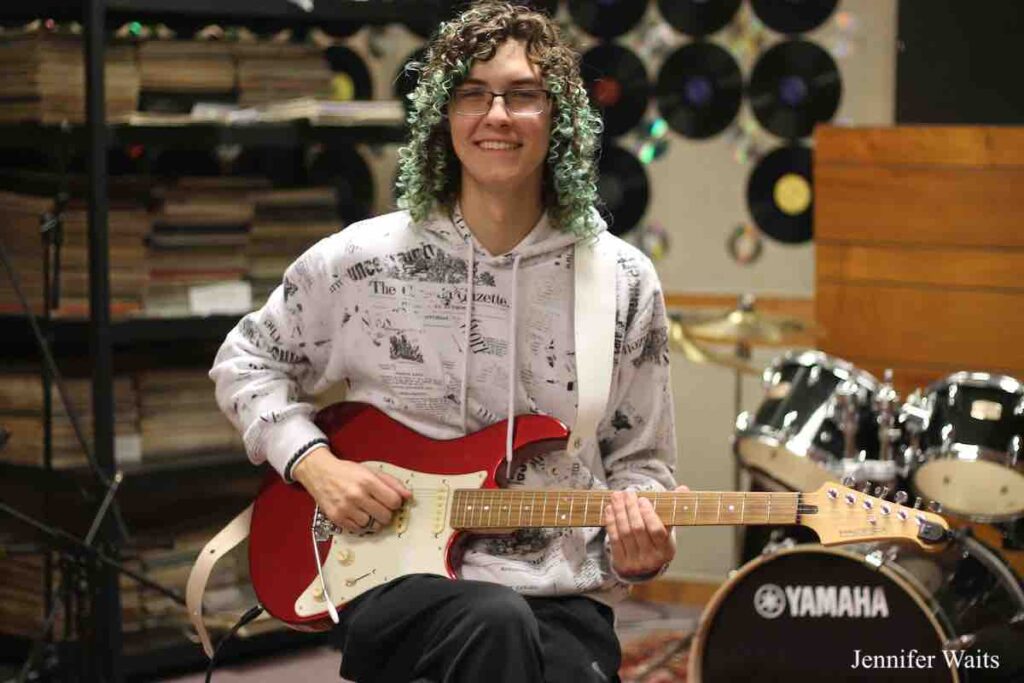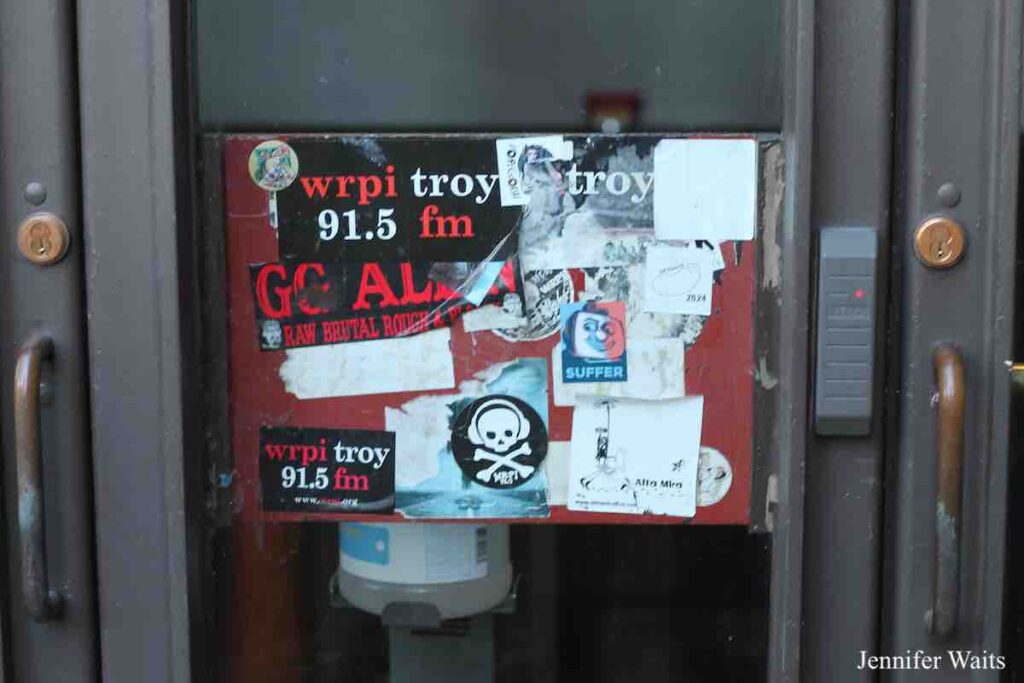College radio stations are generally very welcoming spaces, so much so that I often have to tear myself away at the end of a visit. Rensselaer Polytechnic Institute’s WRPI 91.5 FM in Troy, New York had that effect on me. It had it all: comfy couches, the requisite Leo Blais sign, shelves of vinyl records, a meticulously organized engineering room, and a historical timeline (with photos!) on the wall.
WRPI felt like home, as it has a lot of the things that I love about college radio and college radio stations. But, as is the case whenever I tour stations, what really left a lasting impression on me were the people and the passion that they have for their station.
College Radio Reviving after COVID-19 Restrictions Ease
Lemon (Program Director) and Mei (On-Campus PR Manager) were my tour guides at WRPI during my November, 2022 visit. Both juniors, they were freshmen at Rensselaer during the 2020-2021 school year; a very strange time to be beginning college during the height of a pandemic. As I saw with all of my stations tours this past fall, college radio stations like WRPI had to make serious adjustments in 2020 and are still adapting as COVID-19 restrictions loosen. It’s apparent that the social aspects of college radio and college radio spaces are especially appealing now, since gathering with peers was severely limited for many students over the past few years.
First-year students are often introduced to WRPI during an orientation event called Navigating Rensselaer and Beyond (NRB). The station is one of the student clubs that invites students to come by for a half day or a day for a closer look at what they do. This past fall, WRPI had students go through a series of rotations to check out the technology, the live room, and the on-air studio. Mei explained that they showed the entire broadcasting set-up, with students exploring “every corner” of the station. It’s a huge recruitment tool for WRPI, with 70 to 80 students expressing interest in WRPI during the last session. Around 40 people stuck around until the end of the day and they were even given the chance to play music and talk over the air. “It’s a way to get people hooked,” Lemon added.
The Allure of WRPI for Students
Lemon outlined many of the attributes of WRPI that are a draw for students, pointing out the old equipment that they can work with and repair, the opportunity to broadcast to a 75 mile radius, the ability to mix music and bring in live bands, and the lounge area which is a “great place to hang out.” Mei said that the lounge stays open through the last show of the day, with many people opting to linger at the station all day.
It’s reassuring that interest is again high for WRPI, since during COVID they were unable to invite people into the station during orientation or in general. Membership numbers declined and participants couldn’t socialize in the same way as before. Mei described how there were even “X” marks on the couch, indicating the 6 feet of distance that people were supposed to maintain between each other.
While WRPI is student-run and student-focused, the station also has a smaller percentage of show hosts and DJs from the broader community on the air. Another impact of COVID was that these folks were generally not allowed on campus due to the school’s policy at the time that non-students or anyone not in the school’s COVID-19 testing pool was restricted from coming to campus. Those restrictions were relaxed in 2022. Lemon said that during fall semester 2022, WRPI got the OK to bring community show hosts back on-air, with most having returned by my November visit. With fewer hosts between 2020 and 2022, WRPI relied more heavily on their automation system, which is filled with thousands of albums (somewhere between 5,000 and 10,000 per my tour guides). A current project, which will take a few semesters, is digitizing the station’s CD collection, adding the music to the automation system.
Large Library of Vinyl Records and CDs
In addition to the digitized music, WRPI has a large library of physical music, including vinyl records and CDs. Lemon said that students will play “vinyls,” but mainly use Spotify. Community DJs are more likely to play CDs, but CDs are generally the least played form of media at the station. The most popular methods for playing music at WRPI is from digital or computer-based sources, followed by vinyl records.
As we toured through the station, there were shelves and shelves of records, spread across numerous libraries. In the midst of reorganizing the rooms and the music collection, WRPI is retooling a former “genre room” to a space for CDs and material by local artists. That library used to house material with a “concrete” genre, but interpretations of genres have changed at the station, so the functionality of that room has been questioned of late. Another room is labeled VLTEB, an acronym for the charmingly named Vinyl Library Two: Electric Boogaloo.
Programming Variety
As far as programming, WRPI plays a mix of music shows, talk shows and sports (including hockey). The long-time LGBT show Homo Radio has been on the air since 1992, featuring “news, interviews, event listings, a concert calendar, music by gay-friendly artists” and more, per its website. As far as music, Lemon said that WRPI is a “niche station,” and Top 40 music isn’t generally played. Lemon’s show last fall, “The Lemonheads,” focused on 1970s rock and they also co-hosted “Music from the Decades” with friends. Mei played KPOP and JROCK on her show, “Candy Shop.”
As we glanced at a posted show schedule together, another staffer pointed out his show, “The Ungodly Hour,” which has to be one of the best show names ever. Other programs played indie pop, radio dramas, spoken word, R&B, hip-hop, electronic dance music, and more. I was intrigued by the wonderfully spooky description of a midnight show called “The Devil’s Hour.” Hosted by DJ Selene, the program schedule states, “At this hour, the veil between the living and the dead is the thinnest. Spirits make their way into our world, where they travel through the radio waves and enter the minds of mortals…”
During my visit the station’s powerful 10,000 watt FM transmitter was down. It was being shut off between 8am and 5pm for several months while it was being repainted. The webstream was still running and daytime FM broadcasts came back in January, 2023. As is frequently the case in college radio, the engineering team was busy with many projects. Jose, the Chief Engineer, showed me around the immaculately organized engineering room, which seemed quite fitting for a tech-oriented school’s radio station.
Student Radio at Rensselaer Dates Back to the 1920s
One of the things that prompted my visit to WRPI was my interest in the station’s long and intriguing history. Licensed as an FM station since 1957, WRPI is the descendant of campus radio activities dating back to the 1920s. Rensselaer-owned WHAZ launched over AM in September, 1922. At the time, a news account in The Knickerbocker Press described it as “the most powerful station operated at any educational institution in the country.”
A bulletin published by Rensselaer in 1922 states the rationale and purpose for this initial station:
Realizing its obligation to supply technically trained men for this work, the Rensselaer Polytechnic Institute has, from time to time, found it necessary to make additions to its radio laboratory equipment. The latest addition is a radio telephone broadcasting equipment of the best type known to the art, which has been installed on the third floor of the Russell Sage Laboratory. It was designed primarily to give practical instruction in the operation of apparatus, the theory of which is studied in the classroom…
Popular interest in radio broadcasting has created a demand for diversified programs, and it is felt that engineering schools which require this type of apparatus for teaching purposes can assist in satisfying the demand of the public for broadcast entertainment by supplying programs of an educational nature. For this reason, this station, known by the call letters W H A Z, will broadcast every Monday evening at 8.15, Eastern Standard time, program. consisting of musical selections and addresses by men prominent in all fields of human activity.
Incredibly, AM station WHAZ was owned by Rensselaer until 1967, when it was sold to station WPOW. In the intervening years, a variety of radio activities were happening on campus. The WRPI website outlines this history. As far as the 1920s, “In 1924, a group called Campus Review was formed, devoted to broadcasting college-oriented entertainment and radio to the Troy area. Campus Review was initially responsible for programming a half hour of WHAZ’s six-hours-a-week schedule on Monday night,” according to the WRPI website.
Radio Expansion in the 1940s
By the 1940s, radio activities had expanded and an engineering student organized the “Rensselaer Broadcasting Association” in 1947. According to WRPI, “The RBA took over the remainder of WHAZ’s schedule, working with Campus Review and using talent drawn completely from the RPI community. Later that year, the Radio Club started an experimental AM radio station began broadcasting from the Russell Sage labs, under their call sign W2SZ. Its signal only covered the Quadrangle (then the freshman dorms), but with WHAZ only broadcasting once a week, W2SZ became the first campus station to truly get the attention of the RPI community. Soon students were referring to it, informally, as WRPI.”
In 1948, several radio groups on campus merged to form the Radio Counsel and a few years later, in 1951, it “was divided into an amateur radio group, which still convenes as W2SZ to this day, and a broadcast group.” Broadcasting over 640 AM as WRPI, this campus-only station sent programming out, “using small transmitters scattered throughout campus” and “claimed a listenership of 85% of all those listening to radio sets on campus,” according to WRPI’s website.
WRPI FM Era from 1957 to Today
At WRPI today, one can peruse a timeline of historical tidbits by decade, starting with the 1950s (WRPI launched over FM in 1957) and 1960s. A collage of photos, newspaper clippings, vintage program guides, and stickers; the timeline goes up through the 2010s. Mei and Lemon said that they hoped to extend the display to the 2020s.
As I concluded my WRPI visit, Program Director Lemon and On-Campus PR Manager Mei shared with me why the station is such a special place for them on campus. Mei explained, “It felt so easy to be here compared to any other places that I’ve been…being a woman in STEM.” She added that she also feels welcome at WRPI as a member of the LGBT community, remarking, “It’s nice to see yourself represented.” Lemon concurred, saying that “especially at an engineering school. It’s a majority cis-het men… It’s so nice to have this community where you can be authentic. You can be yourself. Not have to try to like mask, hide, anything like that.” Mei pointed out that WRPI is intentional about creating a positive environment and has safer space policies to ensure that people feel “welcome, appreciated and not put down.”
Thanks to WRPI + More Radio Station Tours
Thanks to everyone at WRPI for the fun visit. This is my 167th radio station tour report and my 109th college radio station recap. View all my radio station visits in numerical order or by station type in our archives. And watch this space for additional tours from my travels in New York state.

